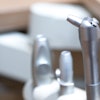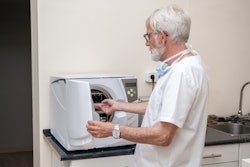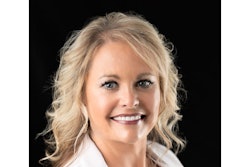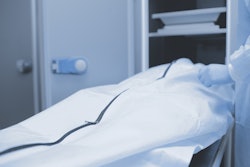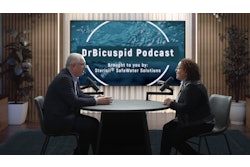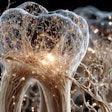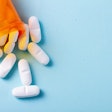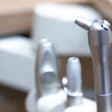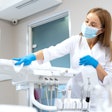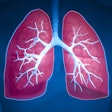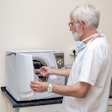You wash your hands. You disinfect surfaces. You sterilize instruments like your license depends on it (because it does). But when it comes to infection control, sometimes it’s helpful to zoom out and look at how other industries tackle cleanliness ... or don’t.
Take restaurants, for example. In one unforgettable "20/20" investigative report, researchers swabbed common surfaces at popular dining establishments and plated the results. What they found could ruin your brunch plans.
 Karen Daw, MBA.
Karen Daw, MBA.
Let’s start with lemon wedges. Those innocent citrus slices floating in your water or perched prettily on your iced tea? Turns out, 70% tested positive for microbial growth, including Escherichia coli, fecal bacteria, and Candida yeast. Why? Because servers often grab them bare-handed, right after handling menus, money, or worse. Think about that next time you pucker up at Chili’s.
Menus, by the way, were another hotbed of contamination, along with ketchup bottles, salt shakers, and tabletop surfaces that rarely get more than a greasy swipe between guests. Oh, and high chairs? More contaminated than toilet seats in some cases.
Now before you cancel your dinner reservation, let’s connect the dots. Dentistry and dining have more in common than you might think.
Both involve close contact, customer service, and surfaces touched dozens (if not hundreds) of times a day. And both can either give guests peace of mind -- or make them squirm -- based on how clean things look and feel.
Here’s the good news: Unlike restaurants, your office has U.S. Centers for Disease Control and Prevention (CDC) guidelines, U.S. Occupational Safety and Health Administration (OSHA) requirements, and U.S. Environmental Protection Agency (EPA)-registered disinfectants. The bad news? That doesn't always mean we follow through consistently.
Let’s compare a few key areas.
Menus vs. clipboards and pens
In the "20/20" report, menus were microbial magnets. In your office, that same risk applies to clipboards, laminated forms, and ballpoint pens that go from patient to patient without a wipe down. Pro tip? Use digital check-ins, or disinfect those touch items like you would an op surface.
Tabletops vs. countertops and front desks
That restaurant tabletop may get a perfunctory wipe between guests, but what about your front desk? Is the keyboard sticky? Is the credit card terminal grimy? Patients notice. And bacteria don’t care if it’s in the op or the waiting room.
Condiments vs. shared tools and personal protective equipment
Just like multiple diners touch the same ketchup bottle, team members might reuse face shields, stethoscopes, or cheek retractors without proper cleaning. The CDC calls this “cross-contamination.” I call it a recipe for a compliance violation.
Restrooms … in both places
Let’s just say no one wants their OSHA inspector to find dust bunnies in the restroom vent. Or splatter on the faucet handle. You’re being evaluated holistically, and, yes, even the bathroom counts.
But let’s be real. All the EPA-registered wipes in the world can’t save you from the No. 1 breach in infection control: hand hygiene.
In a now-famous study by Michigan State University, researchers observed more than 3,700 people in public restrooms and found that:
- Only 5% washed their hands correctly.
- Thirty-three percent didn’t use soap.
- And 10% didn’t wash their hands at all.
And if you’re thinking, “That’s not us! We’re healthcare professionals!” let’s just say we’ve all seen a gloved hand touch a keyboard … then the patient … then the cabinet handle … then the bur block.
So, who skips hand hygiene the most?
That same study found:
- Fifteen percent of men skipped handwashing altogether.
- Seven percent of women skipped handwashing.
- Women were more likely to use soap and wash for a longer duration.
In short, men were more likely to rinse and run, while women at least pretended to be hygienic.
Now, before any male dentists get defensive, I’m not saying you don’t scrub like a champ before surgery. I am saying we’ve all seen the "quick splash and dry on the jeans” maneuver. And in dentistry where hands are tools, communicators, and potential biohazard delivery systems? That just doesn’t cut it.
What’s the takeaway?
You’re already doing more than a restaurant to protect your patients. But in a post-COVID world, perception is reality.
Patients are more aware of cleanliness than ever. If they see dust, clutter, or reused items, they’re not thinking “clinical precision.” They’re thinking, “Ew, I saw this on '20/20' once.”
So go ahead, channel your inner food inspector. Walk through your office like it’s the lunch rush at a greasy spoon. What would you red-flag? What would you clean?
Because in dentistry, infection control isn’t just about what you kill, it’s about what you don’t allow to grow in the first place.
Karen Daw, MBA, is a speaker, consultant, and former safety director for The Ohio State University College of Dentistry. If your practice could use a refresher or a full overhaul on OSHA or infection control training, schedule a discovery call today and learn more at www.theoshalady.com.
The comments and observations expressed herein do not necessarily reflect the opinions of DrBicuspid.com, nor should they be construed as an endorsement or admonishment of any particular idea, vendor, or organization.



